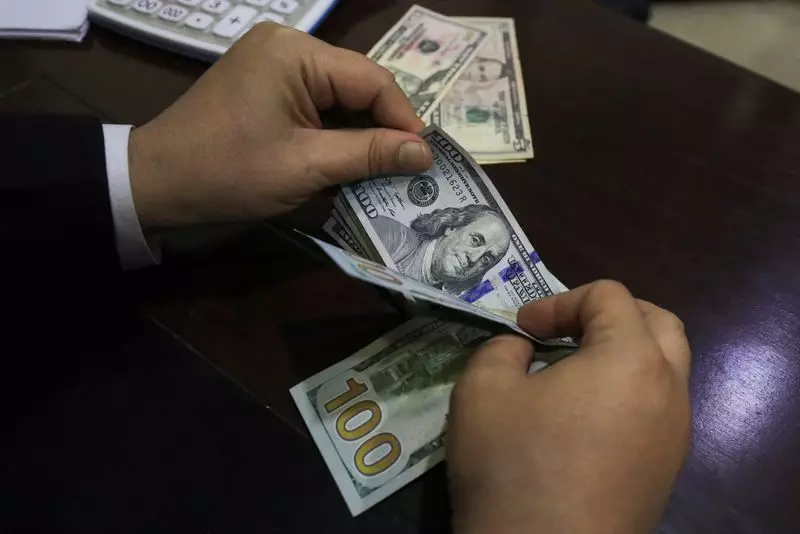As financial markets react to political developments, the valuation of the U.S. dollar continues to fluctuate, reflecting both the complexity of domestic policies and global relationships. Recently, the U.S. dollar has experienced volatility against other major currencies, reaching a one-week low as traders reassess their expectations regarding the economic agenda of President-elect Donald Trump. The currency’s movement serves as a barometer for investor sentiment amidst evolving tariff strategies and broader economic conditions.
The situation escalated following a report from the Washington Post, which suggested that Trump’s administration may not pursue the aggressive tariffs initially promised. Instead, discussions are leaning towards implementing tariffs selectively, focusing on sectors deemed crucial to national security. This nuanced approach could indicate an intention to mitigate potential backlash from trading partners while still safeguarding U.S. interests.
The initial reaction to this news saw the dollar take a dive against currencies such as the euro and sterling. On the one hand, this decrease in the dollar’s value points to a market that is increasingly skeptical of Trump’s fiscal plans, which had initially stirred expectations of a revitalized U.S. economy. However, as the situation developed, Trump refuted the Washington Post’s portrayal of his tariff policy via a statement on his social media platform, which led to a minor recovery in the dollar’s strength.
The U.S. dollar index, which measures the greenback against a basket of currencies, showed fluctuations typical of uncertain market climates. It fell as low as 107.74 but later climbed to 108.38 after the pushback from Trump offered a semblance of stability. This oscillation reflects the delicate balance traders must navigate when making decisions based on political proclamations and economic indicators.
The eurozone, long targeted by Trump’s threats of tariffs, also exhibited weaknesses as the euro dipped slightly to $1.03795 after touching a high of $1.0437 the prior day. This tug-of-war situation illustrates how interconnected global economies are; fluctuations in U.S. policy resonate far beyond American borders, further complicating international trade dynamics. The British pound likewise saw a minor decline, adjusted from a robust position of $1.2550, highlighting a day of mixed fortunes across major currencies.
As both the euro and sterling reacted to these developments, emerging market analysts are watching closely. Chris Weston, head of research at Pepperstone, pointed out that market behaviors indicate a prevailing skepticism regarding Trump’s ability to implement a universal tariff strategy, which was perceived as aggressive yet politically motivated.
Interestingly, amidst all these fluctuations, the dollar managed to gain value against the Japanese yen, hitting a peak of 158.23 yen. This increase was driven, in part, by soaring U.S. Treasury yields, signaling continued faith in the U.S. economy’s potential despite political uncertainties. Investors tend to flock toward U.S. assets during times of uncertainty, further reinforcing the dollar’s status as a safe haven.
In the realm of commodities, the U.S. dollar’s movements can also have significant repercussions. For instance, it edged upward against the Canadian dollar, reflecting changes in Canadian political leadership that might affect economic policies. With Prime Minister Justin Trudeau announcing his intention to step down, analysts are speculating about the potential market repercussions, suggesting a sentiment that a shift in leadership could foster a more favorable economic landscape for traders.
The dollar’s complexities extend into the digital asset realm. Bitcoin, the leading cryptocurrency, saw a modest rise, trading around $102,560—its highest point since mid-December. Digital currencies often thrive in environments of economic uncertainty, and mainstream adoption continues to grow, further complicating traditional currency valuations.
The U.S. dollar’s current behavior is a testament to how intertwined economic theory and political reality can be. As markets react to both upcoming policies from the Trump administration and broader geopolitical occurrences, traders must carefully evaluate their strategies, remaining alert to the rapid pace of change lying ahead in global economics.

